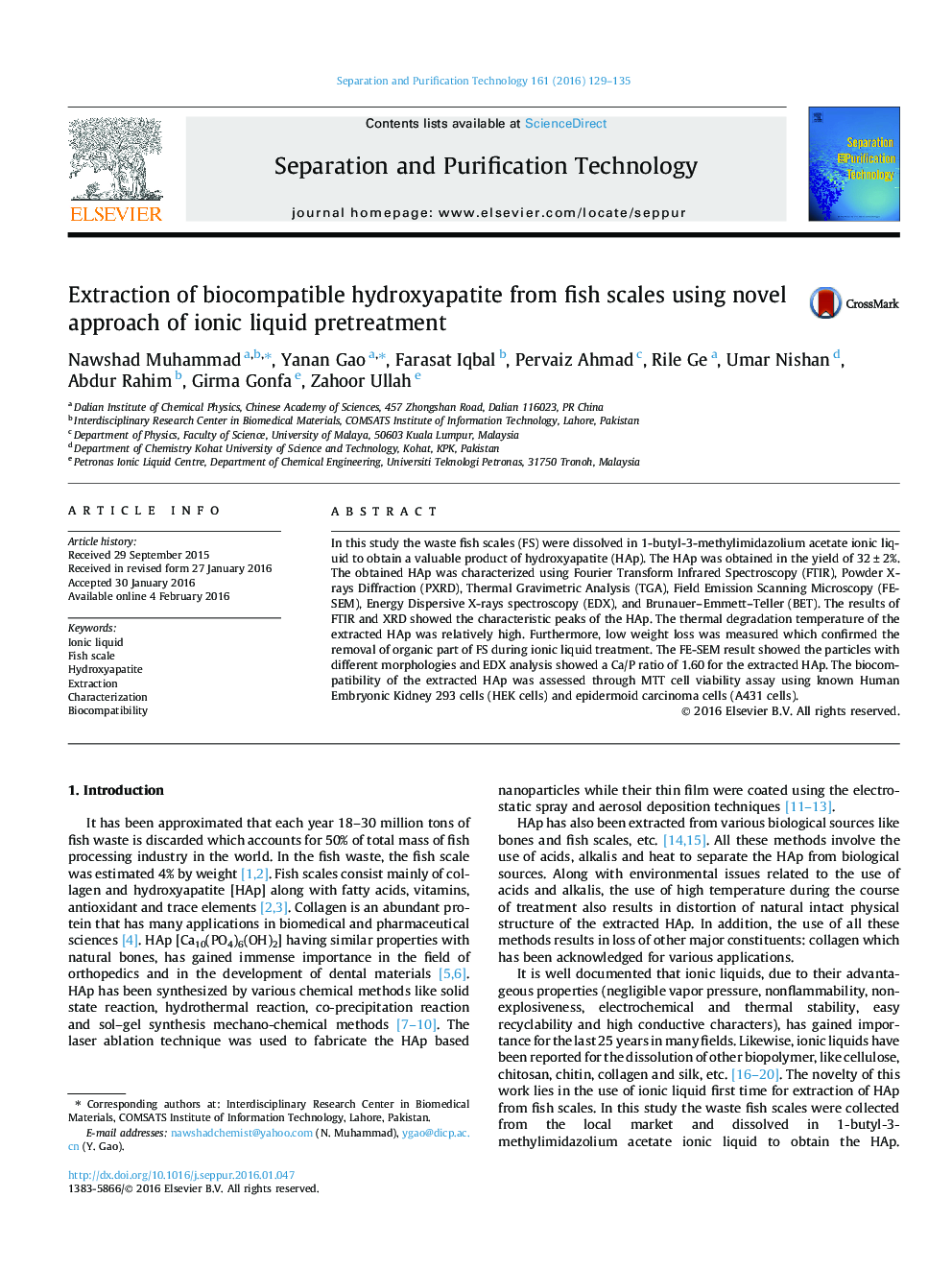| Article ID | Journal | Published Year | Pages | File Type |
|---|---|---|---|---|
| 640005 | Separation and Purification Technology | 2016 | 7 Pages |
•BMIMOAc ionic liquid was used to extract the HAp from waste fish scales.•The HAp was characterized for its physical and chemical structure.•FTIR, XRD, TGA and EDX analysis confirmed the structure of extracted HAp.•MTT cell viability showed the bio-compatibility of HAp.
In this study the waste fish scales (FS) were dissolved in 1-butyl-3-methylimidazolium acetate ionic liquid to obtain a valuable product of hydroxyapatite (HAp). The HAp was obtained in the yield of 32 ± 2%. The obtained HAp was characterized using Fourier Transform Infrared Spectroscopy (FTIR), Powder X-rays Diffraction (PXRD), Thermal Gravimetric Analysis (TGA), Field Emission Scanning Microscopy (FE-SEM), Energy Dispersive X-rays spectroscopy (EDX), and Brunauer–Emmett–Teller (BET). The results of FTIR and XRD showed the characteristic peaks of the HAp. The thermal degradation temperature of the extracted HAp was relatively high. Furthermore, low weight loss was measured which confirmed the removal of organic part of FS during ionic liquid treatment. The FE-SEM result showed the particles with different morphologies and EDX analysis showed a Ca/P ratio of 1.60 for the extracted HAp. The biocompatibility of the extracted HAp was assessed through MTT cell viability assay using known Human Embryonic Kidney 293 cells (HEK cells) and epidermoid carcinoma cells (A431 cells).
